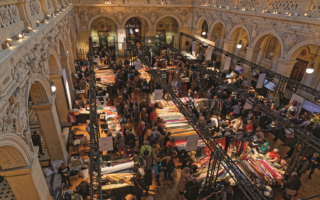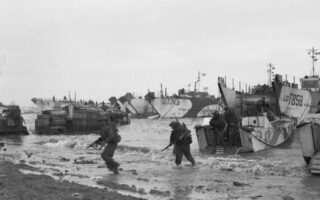Summer cycling in the Alps
Cycling in the Alps isn’t just for pros, but offers amateur riders pretty villages, challenging climbs and scenic vistas, as Zoë McIntyre discovers
“It can’t be much further,” I wheezed through stunted breath. Pushing down on my pedals with almost caricatured exertion barely conquered an inch of ground. Around the hairpin bend, another thigh-burning incline stretched out ahead. Scarlet-faced, I muttered an effusion of curses that got lost on a wind whipped up by a shoal of sleek Lycra-clad cyclers – twice my age and three times fitter – who whistled past me with a chorus of ‘courage!’ Having long since dropped to my lowest gear – something to be saved until the bitter end I had been warned – there was nothing to do but grit my teeth and push on.
I was midway up the Col du Frêne, deep in the Parc Naturel Régional du Massif des Bauges. Its eight-kilometre stack of zigzagging twists and turns that climb up to 950 metres are little more than a warm-up for serious cyclists coming to tackle the nearby Col de la Madeleine, a fabled Tour de France climb. For amateurs like me, however, completing the hour-long ascent proved no easy feat.
A little further on and a few tantrums later, I had stopped agonising over each pedal and found a rhythm, albeit a slow one. I had become distracted by the majesty of my surroundings: to my right, a cliff dropped into a patchwork of meadows that underlay a mass of jagged mountains, wreathed in morning mist. To my left, shafts of light flickered through a stand of fir trees that gave off a mossy perfume into the rarefied Alpine air. As I turned the corner, a blanket of buttercups spilt yellow before a rough-hewn farmhouse. A commotion ahead disturbed the quiet and I squinted into the sunlight to see the arms of my fellow cyclists raised high in exultation. To my surprise and relief, I had reached the summit.
The rapid return down the mountain was an invigorating rush of freewheeling straights and rather terrifying brake-gripping bends. When I shouted a cheery ‘courage!’ to a pair of panting cyclists heading in the opposite direction, I was sure I heard some muttered oaths carried on the breeze.
My ascent of the Col du Frêne was the midway challenge of a four-day Alpine cycle trip organised by Cyclomundo, a tour operator based in Haute-Savoie specialising in both guided and self-guided cycling expeditions in the Alps and other regions of France.
Its founder is an energetic Frenchman called Bruno Toutain, who has a love for life on two wheels and an American twang picked up from a stint in New York. He had mapped out a bespoke itinerary for my motley group of six. We were a hard peloton to please, counting both keen cyclists eager to show off their pedal power on tough terrain and fair-weather riders hoping for a freewheeling scenic route. Our conciliatory course pleased everyone with its variety of landscapes: riverside trails, urban towpaths, sloping vineyards and the occasional sadistic hill climbs. With Cyclomundo taking care of bicycle equipment, transfers and accommodation, our only worry was getting to the next hotel in time for dinner.
The first two days were all about acclimatising to life on the cycle path. Bruno met us at Geneva Airport and we were driven in his bike-stacked minibus to the starting point, a short distance away in the Plus Beau Village of Yvoire. As his team fitted wheels and adjusted saddles, we had a chance to explore.
Almost hidden behind a stone archway we found Yvoire; a quaint warren of narrow alleyways lined by wisteria-strewn cottages on the shoreline of shimmering Lake Geneva – or Lac Léman as it is known in French. Resisting the charms of the many cafés and craft shops, we headed towards the turrets of the medieval château that dominate the skyline. Still inhabited by the descendants of the Marquis d’Yvoire, the castle itself is closed to visitors, but they can visit the Jardin des Cinq Sens. Opened in 1988, these five gardens are linked by immaculately trimmed, labyrinthine hedges, each one designed to represent a different sensory experience.
We spent a happy half hour among the flowerbeds, fountains and medicinal herbs before being called back to our bikes – it was show time.
A wobbly start
Unaccustomed to the lightness of a carbon-framed road bike, I was relieved to begin on smooth tarmac as I wobbled about on my saddle. The 35-kilometre route from Yvoire to Anthy-sur-Léman provided ample time to adjust, and we cycled at a leisurely pace through the unspoilt countryside of the Chablais, the frontier zone pressed between the Alps and Lake Geneva. Spinning down lanes and through sleepy villages, we ended the day on a high by climbing a steeper slope streaked with vineyards and late-afternoon sunshine.
Arriving at our bed for the night at the Auberge d’Anthy, we were warmly welcomed by the owner, who was familiar with Bruno and his trail of tourists. Pleasantly fatigued from an afternoon of exploration, we hastily made our way to the hotel restaurant for a dinner of delicious fresh fish from Lake Geneva and robust vins de Savoie before retiring early.
Next morning, fortified by croissants and coffee refills, we were transported an hour’s drive away to the town of Seyssel. Straddling the River Rhône, the settlement is shared between two départements: Ain claims the right bank and Haute-Savoie the left, with a cable-stayed bridge linking the two. With our trusty Garmin GPS configured, we began the 50-kilometre journey to Chambéry along Seyssel’s riverside cycleway, the Via Rhôna.
Winding its way from the Swiss Alps right down to France’s Mediterranean south, the River Rhône was already an important trade route in Roman times. The Via Rhôna is an ambitious cycle project that aims to connect Lake Geneva to the coast along this historic waterway. Although the completion date is a few years’ away, stages through Savoie and Haute-Savoie are already open.
After a short time, the mellow voie verte morphed into undulating roadsides, flanked by wild wetland and steep ravines. We rose and fell with the landscape, wending through dark tunnels, tangled woodland and unidentified villages with unreserved obedience. Immersed in the splendour of our rugged scenery, we lost sense of time and place; our only care was for the trailblazing mission ahead.
Leisure pursuits
At the height of the midday sun, our trail had rejoined the water’s edge, this time to skirt Lac du Bourget, France’s biggest natural lake, which was formed around 19,000 years ago from a melting glacier. The lake is hemmed in by lofty peaks and has the Abbaye Royale de Hautecombe – burial place of the rulers of Savoie – on its shores, so it is easy to see why meditating on these crystalline waters had inspired some of France’s greatest writers, including Alexandre Dumas and Honoré de Balzac. Today, its hidden alcoves and sandy beaches attract more frivolous pursuits: sunbathing, boat trips and plenty of water sports.
We arrived in the spa town of Aix-les-Bains with aching calves and grumbling stomachs. Along its elegant lakeside promenade, a low-key restaurant satisfied our voracious appetites with melted cheese, lardons and potato-filled crêpes followed by enormous ice-cream sundaes – the perfect cycling fuel.
From there, it was a ten-kilometre stretch to our destination at Chambéry, historic capital of Savoie. The sudden need to negotiate traffic lights, beeping horns and crowded streets was a shock after the serenity of the countryside and it made me realise how quickly I had adapted to the freedom of the open road. In the medieval centre ville, the handsome arcaded streets were enlivened with busy terrace bars during the after-work apéro hour. For those with time to explore the town, its attractions include the Château des Ducs de Savoie and the exotic Fontaine des Éléphants, with its four intricately carved life-size elephant heads sculpted in 1838 to mark the feats of a local general in India.
I would have liked to linger in the town a little longer, but with our minibus already waiting, that would have to be saved for another day.
Our next two nights were spent at the Tour de Pacoret – a beautiful medieval tower-turned-hotel not far from the town of Albertville. Its leafy terrace, mountain-view rooms and outdoor swimming pool offered welcomed comfort to off-duty cyclists in need of repos et détente. That night, we sat in the glass-panelled restaurant, looking out on the immense silhouettes of our surroundings, and tucked into an exquisite dinner of poulet farci, home-made raspberry sorbet and a pungent, herb-based génépi digestif.
Bruno had chosen our hotel not just for its excellent facilities, but also for its proximity to Saint-Pierre-d’Abigny, at the foot of the Col du Frêne. While my ambitious group was bent on tackling the climb, those wishing to bypass the challenge still have adventure aplenty in the surrounding countryside. I loved tracing the scribbled outline of the Lauzière and Belledonne mountains on the seamless blue sky. The hilltop Château de Miolans provided a dramatic backdrop to steep terraced vineyards, neatly knitted with endless rows of luscious vines and welcoming in passers-by for a dégustation. Each sleepy hamlet we passed through seemed to carry its own ancient narrative, all rickety barns and creaking signposts. The cycle ride confirmed that French rural life is alive and well, carrying on much as it has done for hundreds of years.
It wasn’t all rural rides; we got our taste of glamour too. After a sweeping descent of the mountains, Bruno surprised us with a gourmet lunch at Château des Allues, a boutique château-hotel with five suites, its own orchard and a rose garden. We spent the afternoon in the garden, sipping fresh grapefruit punch and basking in the sun and the warmth of our uphill glory.
Glorious views
There was a shift in tone for our final morning’s foray from Albertville to Annecy. Unlike the previous day toiling up the Col du Frêne, our route was not the preserve of the Lycra-clad aficionados. Instead the blissfully smooth and flat voie verte was filled with couples, friends and families enjoying a Saturday morning jaunt on foot, bikes and roller skates. This lent a welcome laid-back feeling, made all the more gratifying as it allowed us time to enjoy the glorious views across the turquoise waters of Lac d’Annecy.
In picturesque Annecy, a plane tree on the lakeside beach provided a shady spot for a makeshift picnic. We raised a toast to our own personal Tour de France with chilled white wine and vowed to return to the surrounding mountains which, I was sure, would remain vivid in our memories long after the aches in our limbs had subsided.
FRANCOFILE
GETTING THERE
By road/ferry: It takes around 7½ hours to drive to the Alps from the northern ferry ports.
By rail: The nearest TGV stations are Chambéry, Annecy and Albertville. The journey from London via Paris takes around 6½ hours.
By air: Various airlines fly to Geneva Airport. See holiday planner on page 89 for more details.
GETTING AROUND
Zoë went on a bespoke trip with tour operator Cyclomundo, in partnership with Savoie Mont Blanc tourist board. Cyclomundo has guided and self-guided trips for all levels.
A three-day ‘Short Escape from Geneva’ starts at €355pp based on two sharing a room.
Tel: (Fr) 4 50 87 21 09
WHERE TO STAY AND EAT
L’Auberge d’Anthy
2 Rue des Écoles
74200 Anthy-sur- Léman
Tel: (Fr) 4 50 70 35 00
Doubles from €69, breakfast €8.50.
La Tour de Pacoret
Grésy-sur-Isère Montailleur 73460 Frontenex Tel: (Fr) 4 79 37 91 59
Doubles from €75, breakfast €12.
Château des Allues
73250 Saint-Pierre- d’Albigny
Tel: (Fr) 6 75 38 61 56
Doubles from €140, including breakfast.
Tourist Information
Savoie Mont Blanc tourist board
Tel: (Fr) 8 20 00 73 74
Share to: Facebook Twitter LinkedIn Email


